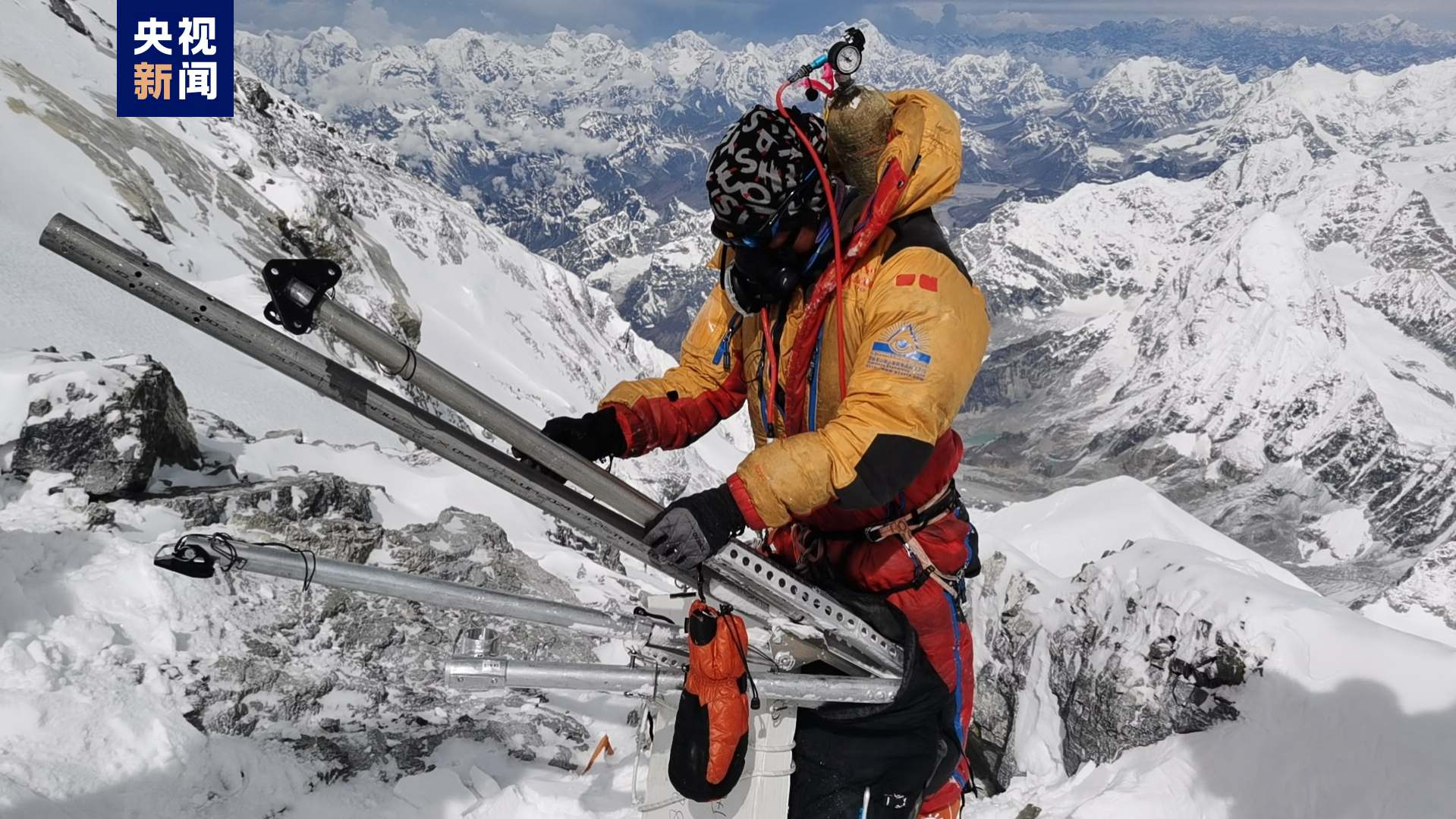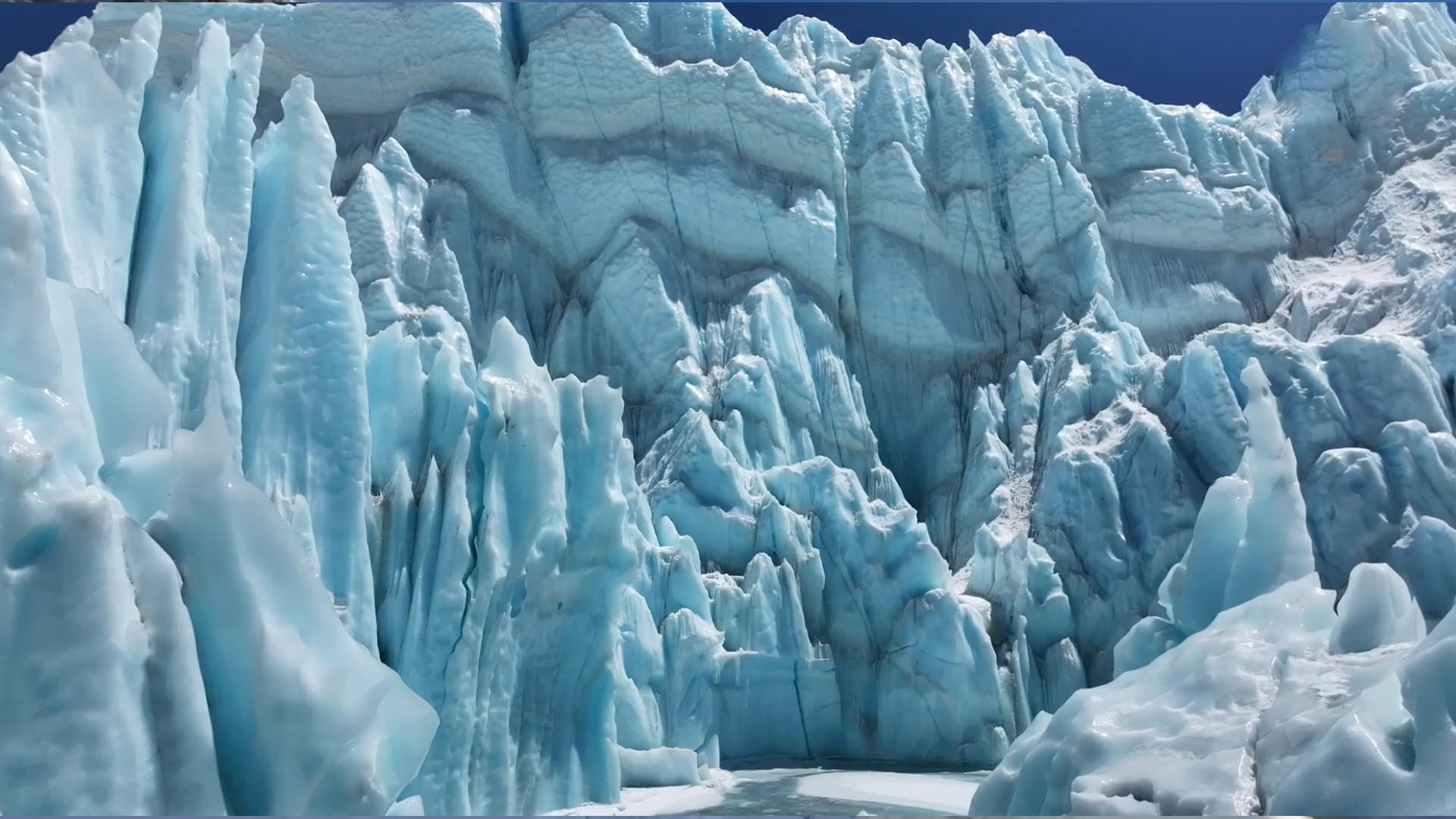
A member of China's Peak Mission expedition at Mount Qomolangma, May 23, 2023. /China Media Group
A member of China's Peak Mission expedition at Mount Qomolangma, May 23, 2023. /China Media Group
China's Peak Mission expedition reached the summit of Mount Qomolangma, the world's highest peak at a height of 8,848.86 meters, on Tuesday and will continue to collect snow and ice samples.
The 11-member team set off from the expedition's camp at an altitude of 8,300 meters for the summit at 3:03 a.m. Beijing Time.
Four of them first reached the world's highest automatic weather station at an altitude of 8,830 meters above sea level, which was set up by China in last May.
Powered by solar panels, the station is designed to last for two years under harsh weather conditions and is equipped with a satellite communications system for data transmission every 12 minutes.
The technological upgrade work of the station started at around 11 a.m., and was completed in roughly half an hour.
Signals from the automatic weather station have been well received by the base camp at an altitude of 5,200 meters.

Members of China's Peak Mission expedition at the summit of Mount Qomolangma, May 23, 2023. /China Media Group
Members of China's Peak Mission expedition at the summit of Mount Qomolangma, May 23, 2023. /China Media Group
Lunar power supply technology applied
Power supply for instruments and equipment is always a challenge in this extreme high-altitude area.
This time, the scientific research team collaborated with the researchers responsible for the power supply system in China's lunar exploration project, and successfully applied the technology on the moon to Mount Qomolangma, overcoming the power supply obstacles when facing extremely low temperatures, extremely low pressure and instruments' self-starting power protection in an extremely high altitude area.
Compared to last year when they had to collect the samples by manually drilling, this time the members are powered by electric tools, which saves energy and is also an innovation in the scientific expedition.
A slew of scientific research
Dubbed the "roof of the world" and "water tower of Asia," the Qinghai-Xizang Plateau is an important ecological security barrier in China. It is also a natural laboratory for conducting research on the evolution of the Earth and life, the interaction among spheres, and the relationship between man and Earth.
Yao Tandong, commander of the Qomolangma expedition, said the 2023 Qomolangma scientific expedition will focus on major scientific issues such as how the extremely high-altitude environment of the mountain changes under the influence of global warming, how the environmental changes interact with the westerly winds and monsoons, and how the environment in the area will affect the "water tower of Asia" in the future.
The research team also carried out a comprehensive observation of the glacier on the Qinghai-Xizang Plateau, home to the world's largest glacier besides the North and South Poles, and the source of over ten rivers in Asia as well.
At a height of about 5,300 meters, where there is a lake formed by the meltwater from the Rongbuk Glacier, the researchers have observed several indicators, including water temperature, pH, dissolved oxygen, turbidity, carbon dioxide exchange rate at the water-air interface, etc.
01:25

Wu Guangjian, a researcher at the Institute of Tibetan Plateau Research under the Chinese Academy of Sciences, said the carbon dioxide exchange rate is high, which suggests the carbon dioxide exchange process is strong. "It is of great significance to understand how the melting glacier affects the climate environment," Wu said.
To acquire more accurate data, the researchers have set up an additional hydrographic survey ship on the meltwater of the Rongbuk Glacier to measure and map the flow and velocity of the river.
The expedition is part of the second comprehensive scientific expedition to the Qinghai-Xizang Plateau which was initiated in 2017.
Some 170 researchers from 13 teams have participated in it, targeting research on water, ecology and human activities at the region. It will be of great significance to study the impact of climate and environment change in the Qomolangma region on the rest of the world.
So far, a series of scientific results have been achieved during the expedition, including the synergy and influence of westerly winds and monsoons, the special physiological response of the human body in the Mt. Qomolangma region and the ecological process of the greening of the region.